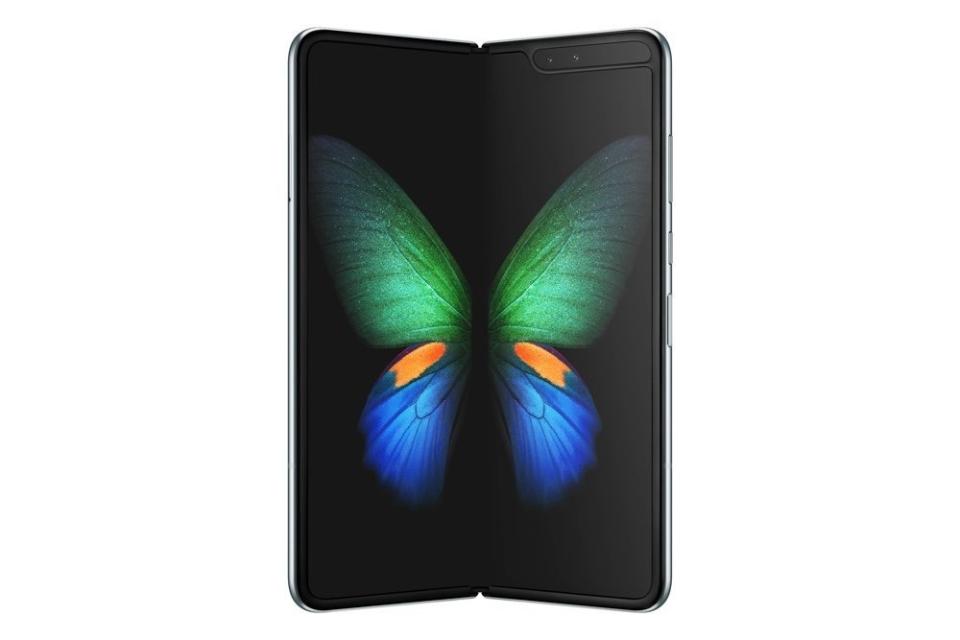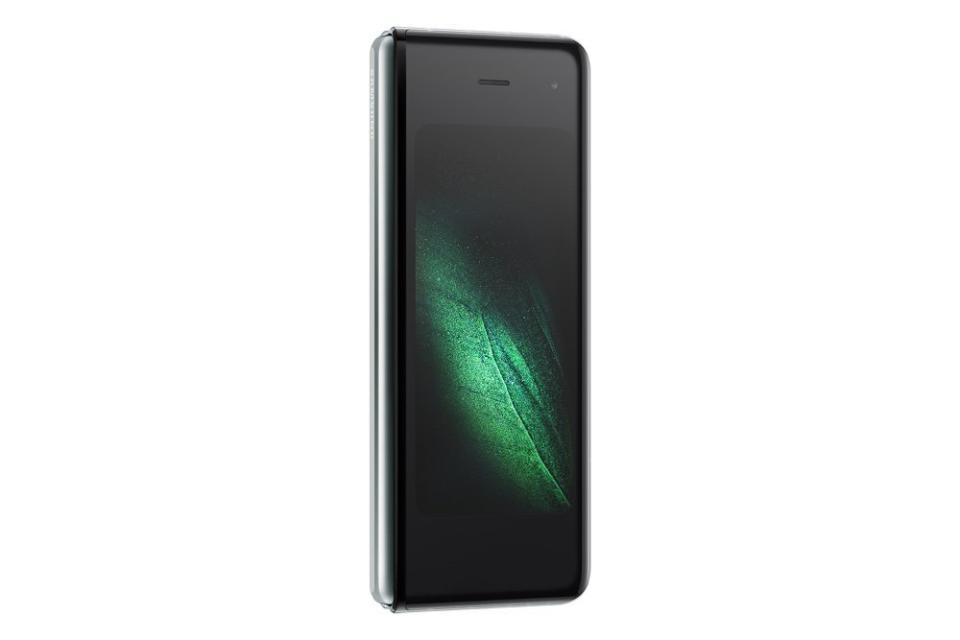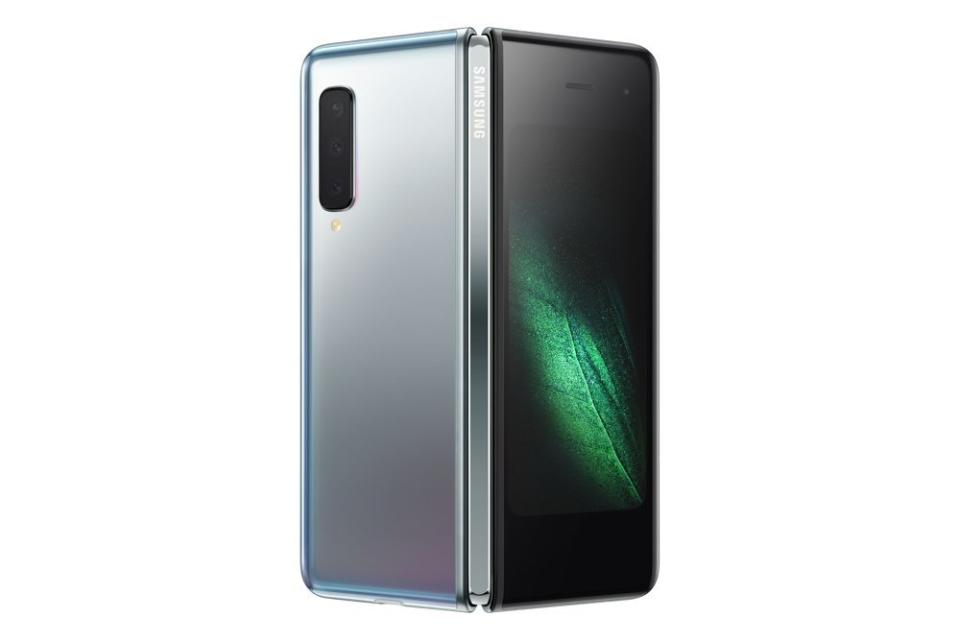Samsung's $1,980 foldable smartphone will test the limits of what consumers will pay

Samsung finally unveiled its much-hyped foldable smartphone during its Unpacked press conference in San Francisco on Wednesday. The Galaxy Fold features a 4.6-inch Super AMOLED front screen display that you can use as a normal smartphone. But unfold the device, and you'll be met with a 7.3-inch Dynamic AMOLED display.
The Fold is meant to lay the groundwork for next-generation foldable handsets that companies like Samsung hope will help spur a second explosion in smartphone sales around the globe. It’s also the perfect example of the kind of risky design and styling that made Samsung the tech giant it is today.
But the Fold is going to cost you a heck of a lot of cash. Starting at $1,980, the Galaxy Fold will test the waters for what consumers are willing to pay for a smartphone.
On sale April 26, the Fold will be available in LTE and 5G models. Samsung says the phones will sport 7-nanometer processors, which will likely be Qualcomm's Snapdragon 855 here in the U.S. That's the same processor found in the new Galaxy S10.

The company also says Fold will have an astonishing 12GB of RAM and feature 512GB of storage. There will also be two batteries built into the handset, one on either side of the fold.
Adding to the phone's over-the-top features are its 6 cameras. That's right, Samsung has outfitted the Galaxy Fold with a 10-MP camera on its front panel, and 10-MP and 8-MP cameras on the inside. Around back you’ll get a 16-MP, ultra-wide angle lens; a 12-MP, wide-angle lens and a 12-MP, telephoto lens. It's overkill to the extreme.
So how do you use the Fold? Well, the main display is used for apps that don't need much screen real estate. But if you want to get a better look at those apps, you simply flip the handset open, and the app will open up on the big screen.
Samsung says it's already working with Google (GOOG, GOOGL), Facebook (FB,) and Microsoft (MSFT) on apps that take advantage of this "app continuity" feature. In a demonstration, Samsung showed how Google Maps can go from the Fold's 4.6-inch panel to the phone's 7.3-inch display in the blink of an eye.

Speaking of apps, Samsung says you'll be able to multitask with 3 apps at once when using the Fold's 7.3-inch screen. I rarely use multitasking on my own tablet as it is, so I'm not sure how likely I am to use the feature with the Fold, but it will be interesting to see in person.
The idea here is to combine your smartphone and tablet in one device. I'm still not exactly sold on the device. I'm also curious to see how Samsung will prevent people from breaking the Fold's hinge when they inevitably sit on it. What's more, the company will have to ensure that the Fold doesn't open so wide as to break in two.
The Fold could be the start of a smartphone revolution the same way Samsung’s Galaxy Note helped bring big screen phones to the masses. But we’ll need to see how the handset actually works in our day-to-day lives before we can say one way or the other.
We'll find out more about the Fold when it hits the market later this spring.
More from Dan:
Email Daniel Howley at [email protected]; follow him on Twitter at @DanielHowley. Follow Yahoo Finance on Facebook, Twitter, Instagram, and LinkedIn.www.cerveza-artesanal.com/

